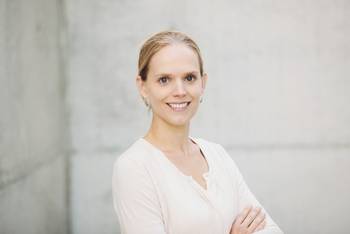The new program for female professors is part of the strategic Leibniz-internal competition and supports top-level research. It stimulates the collaboration of Leibniz institutes with universities and promotes highly qualified female scientists and their research by supporting W2 or W3 professorships. The funding period is five years and includes co-funding of the associated Leibniz institutes. The selected five projects are financed with 9.4 Million Euros in total.
Dr.-Ing. De Laporte heads a junior research group at the DWI – Leibniz Institute since 2013. In 2015, she received an ERC Starting Grant of the European Research Council. Together with her team, she develops new material concepts and fabrication methods to create functional biomaterials, which mimic the complex structure of natural tissues. “This Leibniz grant supports me to further establish my academic career and elevate my research to the next level,” says Laura De Laporte, who works at the interface of artificial and biological materials. “We use tailored, biocompatible building blocks of different sizes – from single molecules to the micrometer scale. These building blocks are assembled into artificial macroscopic constructs with unique properties to study the interaction of cells with our materials and control their behavior.”
With her three-dimensional, biomimetic materials, Laura De Laporte aims to grow functional living tissues inside the body or for ex vivo organ models. In one example, her team developed an injectable gel, defined as Anisogel, whose components can assemble and orient after injection into the body. This material can be applied in a low invasive manner to induce unidirectional nerve regeneration after spinal cord injury with the aim to reconnect nerve tracts and regain function.
